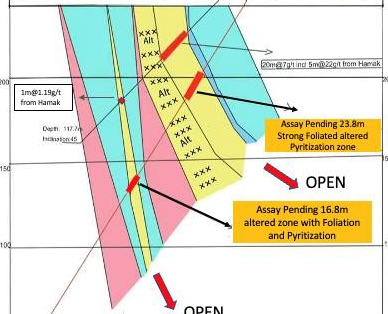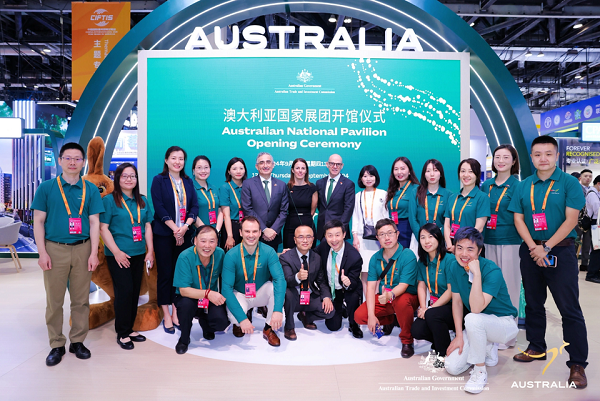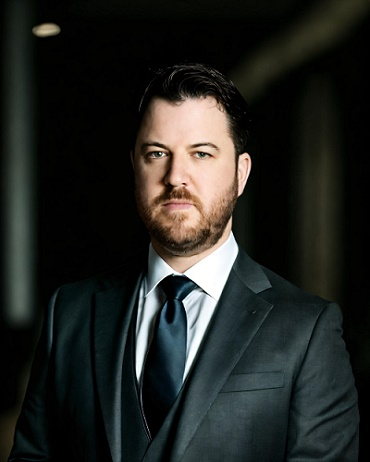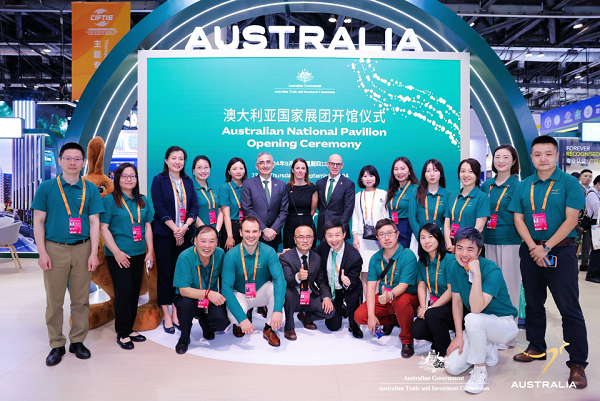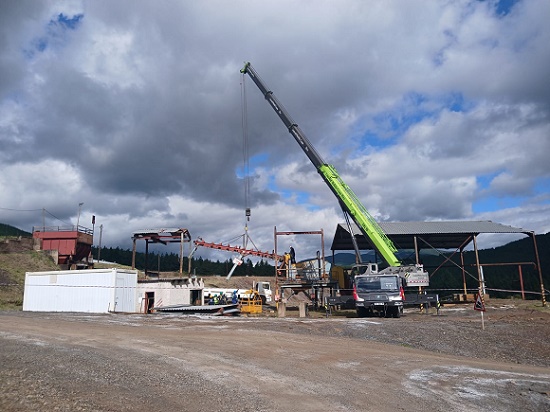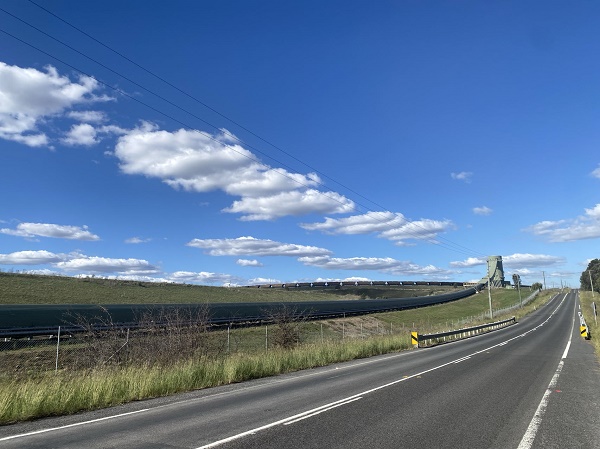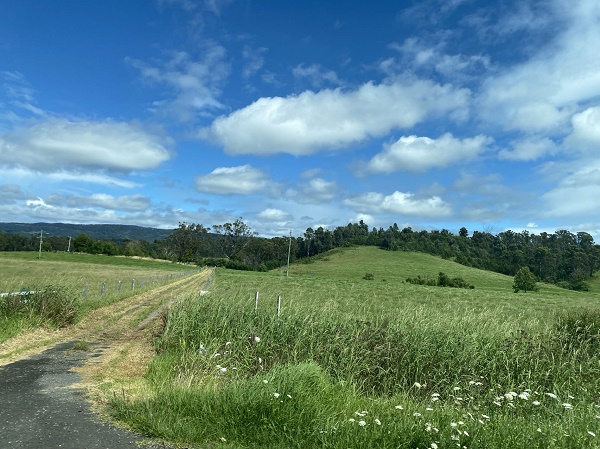Investment is a never-ending topic in the capital markets, and for most share investors, to learn how to find companies with future development potential in the unpredictable financial market is a process of life-long learning. No matter if you are an individual investor or a professional investor, it is particularly important to establish your own investment philosophy from the continuous exploration and interaction with the market.
In short, the essence of value investing is to judge whether an enterprise can continuously create more value for investors in the future. Charlie Munger once said that investors should wait patiently for a good shot. With patience, discipline and objectivity, wealth can be created without frequent buying and selling.
Today, we are honored to have Mr. Carlos Gil join us to share about his investment philosophy and strategies. Carlos Gil is the CEO and Chief Investment Officer of Microequities Asset Management (ASX:MAM). Microequities Asset Management Group is a funds management company focusing on small to microcap companies in Australian and global stock markets. Carlos, based on his more than 30 years of experience in the equity market, leads Microequities Asset Management to manage four funds based on the value investing principle, and those funds have successfully outperformed the market index in most years. The Deep Value Fund, which focuses on small and microcap companies on the Australian Stock Exchange, achieved annual return of 35.14% last year and gained total return of 758.92% since the fund was launched in 2009.
Let us go into the interview with Mr. Carlos Gil to learn the successful investment philosophy of an investment professional.

Carlos Gil CEO and CIO of Microequities Asset Management (ASX:MAM)
ACB News: Carlos, welcome to ACB News Executives Interview Column. We have heard a lot about you from our previous interview with Atlas Advisors Australia, one of the largest fund managers that provides SIV complying investments in Australia. Atlas Advisors Australia chooses Microeqities Asset Management as their small and microcap funds partner, we are curious what makes MAM unique. Can you please briefly introduce yourself and Microequities Asset Management to our readers?
Carlos Gil : My name is Carlos Gil. I am the Chief Investment Officer and Chief Executive Officer of Microequities Asset Management. We specialise in investing in undervalued growth businesses, typically microcap and small cap companies that are listed on the equity markets, in the Australian market and international markets. We also invest in private companies, and we are launching a new private equity fund. The fund targets investments in private companies that are likely to IPO over the next few years or that will be sold through a trade sale or to private equity.
I have been investing in the stock market since I was 16. I regard investing as my life project, I have dedicated my whole professional life to investing for the past 30 years. I’m very passionate about investing and particularly in small companies, because we think that over the long term, smaller companies will outgrow the larger companies, therefore delivering superior investment returns to investors.
Microequities Asset Management manages close to half a billion dollars on behalf of our clients, and we’re also heavily co-invested with our clients. Our investment team has over $60 million invested with our clients, we are putting our own capital at risk alongside our clients. Therefore, there is strong alignment with our clients, and through investment together with our investors, we assure them that we have their best interests at heart.
ACB News: We know that Microequities is a fund manager that currently manages 4 equity funds focusing on microcaps. Can you please give us a definition of microcaps?
Carlos Gil : For most fund managers and professional investors, a microcap is a company that has a market capitalisation of under $300 million. We specialise in investing in microcaps, and we also can invest in companies as small as $30 to $40 million.
ACB News: Can you please explain the differences between the 4 funds under MAM’s management?
Carlos Gil : Yes. We have 4 funds under management, they are Deep Value Fund, Pure Microcap Value Fund, Global Value Microcap Fund, High Income Value Microcap Fund.
Deep Value Fund is the oldest fund, which was launched in March 2009. The total net return of Deep Value Fund is close to 800%, and the average annual compound return is 19.2% over the past 12 years. The fund started in microcap investments, but over time, some of the companies we invested in started to grow bigger and bigger, so it’s no longer 100% microcaps; Pure Microcap Value Fund is what Deep Value Fund was 12 years ago, which is only microcap investing.
Global Value Microcap Fund is the fund predominantly focused on small and microcap companies in Europe and North America, and in the High Income Value Microcap Fund we buy industrial companies where the dividend income of the company is generally higher than 6%. We have a portfolio of 32 companies that are paying regular dividend income, and the fund distributes high cash income plus capital growth to the investors.
ACB News: Looking at the fund performances of MAM, the figures showed that MAM’s team is doing an impressive job. The Deep Value Fund has achieved a compound annual return of 19.18% since its inception in 2009; the latest one-year return of Pure Microcap Value Fund is 74.95%, and the latest one-year return of Global Value Microcap Fund is 59.39%. The compound annual return since inception of those funds is all over 10%.
As the CEO and CIO of MAM, from your personal perspective, what are the secrets to achieve such an amazing result?
Carlos Gil : Firstly, patience is particularly important for us. We understand that investing is like a business partnership. If we enter a business partnership, we are prepared to be a long-term business partner because good things take time. Secondly, we are willing to invest over the long term and hold the investment for the long term. Thirdly, we have maintained our value discipline. We never pay a fair price for these businesses. We always buy them at a substantial discount to our calculation of fair value.
When you combine patient investing with strong value discipline, plus long-term investment timeframe, these three things provide a good formula for success.

Carlos Gil CEO and CIO of Microequities Asset Management (ASX:MAM)
ACB News: Compared with investing in blue chips, investing in microcaps is regarded as riskier due to the poor market liquidity, less interest from institutional investors, and high volatility in share prices. How do you think about this view?
Carlos Gil : It is partly valid. If you look at the investment universe on the Australian Stock Exchange, there are more than 2000 companies, roughly 1600 are small and microcaps. There are some very risky businesses that produce little revenue and are speculative in nature, but there are some companies which have much lower risk with high quality business models, they are producing revenue, have no or low debt on the balance sheet and are undervalued. We focus on the latter.
There is no risk-free investment. In order to invest successfully over a long time, you need to understand the risks. You need to price the risks and always look at an investment from the viewpoint of what is the potential reward and what is the unit of risk. So, it's reward per unit of risk that you need to assess. We have invested successfully in many companies, and we've done it over and over again. It is about being very diligent in following the process of investing, understanding risks, valuing that risk and understanding what the potential reward is. In the microcap and small cap companies, there can be very high-risk opportunities, and we don't like those opportunities. We do not like potentially high return for high risk. If you invest in a high risk, high return opportunity, you might be lucky to make great returns, but that’s not repeatable. If you keep making high risk, high reward investments, ultimately you end up losing money. We look for good return, sometimes high return, for moderate or low level of risk, because that is very repeatable.
ACB News: What are the challenges of putting money into microcaps? Can microcaps also be a good option for those more conservative investors?
Carlos Gil : To get into some of these companies we really like, sometimes it can take us a long time because they are not raising capital, so we need to buy the equity through the stock market from other shareholders. It sometimes takes us 3-5 months to buy 6% or 7% of a company. This comes back to being patient, buying it slowly, and not pushing the price up. We are always disciplined on the price at which we invest in the company.
Investing in microcaps can be a very good investment from a conservative perspective. But if you are doing it by yourself, you need to be willing to spend a lot of time doing research to understand the risk exposure. It involves a lot of homework. There are many safe and far less risky companies in our asset class than large companies, and there are many large companies that are quite risky. To invest successfully, you either need to spend a lot of time on research or you need to find a fund manager that will do the homework for you.
ACB News: The MAM team believes in value investing, the funds managed by MAM aim to identify undervalued smallcap and microcap companies, invest in them and hold them for the long term.
However, the traditional value investment style has experienced a tough period since the market reached the bottom last March, and value stocks were beaten by growth stocks during this period. How do you think about it? Does “value focused investment” mean that MAM rules out the potential opportunities in growth stocks?
Carlos Gil : It’s a good question. People normally put you into two buckets, either you are a growth investor or you are a value investor. The way we see it is that we buy growth assets that are undervalued. We do not like or invest in businesses where there is no growth left. We need to see good long-term growth prospects for us to buy.
Some of our investee businesses are growing at 30% per annum. We tap into growth assets, the main difference is we are not prepared to pay a fair price or an overvalued price for those businesses.
People need to understand the difference between price and value. Price is what you pay for something, value is what you get from that. If you buy Afterpay as a professional investor, you're going to pay a price for Afterpay, and you should also understand the value of Afterpay. It doesn't matter whether the asset is growing at 30% or growing at 5% or growing at 15%, value investing is about identifying opportunities where the value is well in excess of the price. Our view is that they are not antithetical, you can be a value investor in growth assets.
ACB News: What are the key factors of a successful value investment?
Carlos Gil : Patience, the first important thing in investing.
Just because we buy an undervalued asset today does not mean that tomorrow it will be fairly priced, it can take sometimes years for other investors to realise that this asset is undervalued by the market.
The other thing is not to be disturbed by other’s or the market’s views.
When we look at a company, sometimes the market dislikes it for several reasons and we form our own opinion. We do our own research, we might invest in a company where the predominant thesis from other people is negative, and we might come up with a different conclusion. For value investors, you need to feel comfortable that sometimes you might be in the minority , you need to have high conviction in your judgement because sometimes your views are in the minority.
ACB News: While it’s very common that some of the top performing stocks in the ASX market are microcaps, we also heard that a lot of microcaps got delisted or even went bankrupt. How to balance and manage the opportunities and risks in microcap investments? Can you please tell us how does MAM conduct the investment process?
Carlos Gil : Firstly, there are 1600 small and microcaps companies on the ASX. Only 400 of them make profits. Around 1200 companies do not deliver profits, they make losses every year.
We stick to the 400 companies that are making profits, this is the first risk management tool we use.
Secondly, we look at the balance sheet to make sure that there is little or no financial debt, we ensure that they are not in financial distress, this reduces fundamental risk quite significantly.
Also, as I mentioned before, we use value to reduce risk because we are not paying a fair price to buy the shares, if things do not go as expected, (the price we pay) gives us a buffer.
Fourth, we take a lot of time to do research and due diligence on the companies. We will meet with the management teams, look at the board composition, study the products and services to understand the competitive positioning of the company. For example, if we are looking at an enterprise software company, we will reach out and ask other competitors or other industry participants to understand where the company’s products sit in the landscape.
Actually, 80% of our time is spent on researching and analysing companies before we invest, because we want to be ready if the company we like opens a window or an opportunity for us, we have to ensure that we have already done our homework and we can buy the company at a discounted price.
ACB News: Can you please share with us one or two companies that are covered in MAM’s portfolio that impressed you the most? How long have you been holding them? How are they performing now? What are the factors that made you decide to invest in those companies?
Carlos Gil : Let me take SmartPay (ASX:SMP) as the example.
Microequities owns close to 15% of the company, we have been holding the shares for 5 years. We first started buying SmartPay (ASX:SMP) at 10 cents per share, today the company trades at 84 cents per share (As of 24th June). We have benefitted from a 700% return from SmartPay. This company is in the payments industry and grew its Australian revenue by 96% over the last financial year. It has an EFTPOS terminal that it sells to small and medium enterprises, the terminal fleet is growing by more than 300 per month.
When we first bought the company, we felt that the share price of SmartPay was completely undervalued. Secondly, it also offered us a very good growth opportunity, particularly in the Australian market.
It has those qualities we always look for. Is there growth? Is the company growing its revenue and earnings in the future? Is it really cheap?
With SmartPay, we get both things, when we bought the business, it had a market value of $30 million, today it is close to $200 million.

ACB News: MAM is a listed company on the ASX, from its recent market updates, we can see that MAM is also a good investment option with increased profits, no debt, a reputable board of directors. As the CEO and CIO of the company, how do you see the company in the future?
Carlos Gil : Because of the underlying investments that we own will continue to grow, this will benefit our shareholders as we will have more funds under management. When I think about our journey as a publicly listed company, I think it's very difficult for us to fail because we have a great tailwind in the fact that we are investing in growth assets and these assets will become more and more valuable in the future. That helps secure our own growth. Hopefully, if people read and hear about our success, they will look to join us. More clients will also help to grow the business.
ACB News: Can you please share about your interests or habits outside of the working hours? What do you like to do? Or any books you would like to recommend to our value investors?
Carlos Gil : I like to run. I like to do endurance running because it’s like investing, you need tenacity and endurance. I run three or four times a week, it’s a form of therapy for me. Through running, I can think logically and plan strategically, it's a form of meditation.
I love movies, I’m a big movie fan. Also, I like reading about history because we can learn a lot of things from the past that are applicable to the present and applicable to the future.
To be honest, I don’t read a lot of investment books because I’ve forged and formed my own investment philosophy through many years’ experience. I was fortunate to be quite successful in my mid-twenties. By then, I had already developed quite a sophisticated system and process. But that does not mean that I’m not learning. For me and our investment management team, it is very important to have an appetite for learning because in this industry, everything is always evolving and changing. No matter how old you are, you should always have an appetite for learning otherwise your information and knowledge gets outdated.
There is a book written by the great fund manager, Peter Lynch ---
End of The Interview










